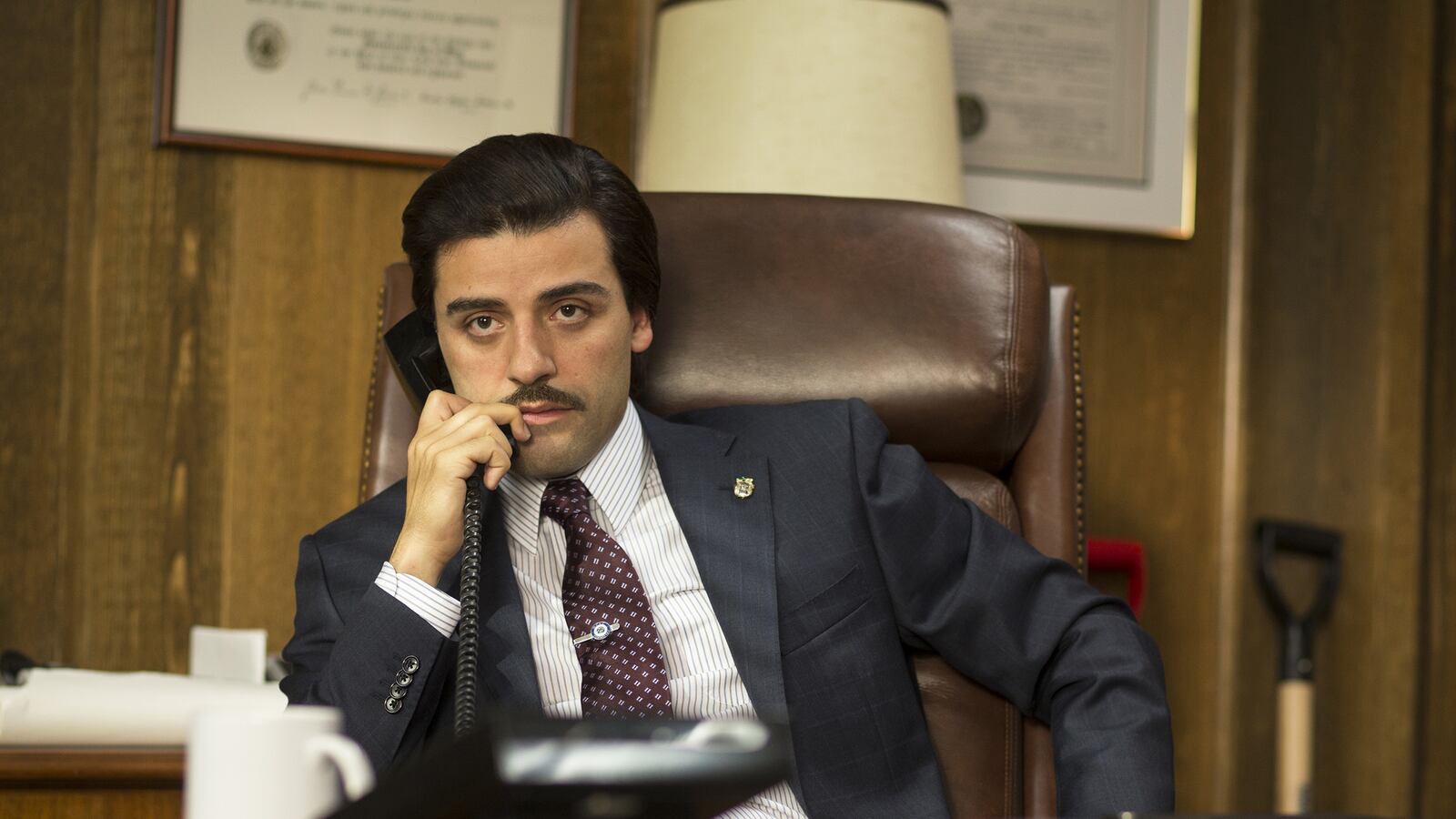The common wisdom in conversations about television has always been that writers and actors love TV because the long-form nature of serial television lets them explore characters, settings, and ideas with more depth than a feature-length film. But as television expands, and as networks like HBO, Showtime, Netflix, AMC, Amazon, and Hulu vie for the attention of binge-hungry audiences, top shelf directors are increasingly turning to the small screen.
David Simon’s latest series Show Me A Hero presents an enticing opportunity for any director worth his salt. The former Baltimore Sentinel reporter behind series like The Wire has managed to spin gold once more, this time in only six episodes.
Adapted from a book of the same name by New York Times writer Lisa Belkin, Show Me A Hero is the true story of a housing crisis in Yonkers, New York over 20 years ago, when a judge ordered the city to build low-income housing in the middle-class, predominantly white part of town. Simon follows Mayor Nick Wasiscko, played by Oscar Isaac, as he struggles to guide the town through desegregation while still preserving his career as a politician. Just as with Baltimore in The Wire, the story of Nick Wasiscko and Yonkers becomes a powerful stand-in for the hopes, dreams, disappointments, and decisions of America as a whole.
It’s brilliant work from Simon, and to achieve such depth with just six episodes feels almost miraculous. Regardless of who was behind the camera, it would be must-see television, but a script this good deserves images to match.
Which is why I’ve only got one question for HBO: why Paul Haggis?
Haggis is a gifted screenwriter in his own right—among other things, he wrote what is still the best of the Daniel Craig-starring Bond films, Casino Royale—but his sensibility as a director is decidedly at odds with the way that Simon’s world functions. There have to be other directors out there who love Simon’s work enough to take on a miniseries with him. I mean, this is a man our current president took time out of his day to interview.
Simon puts an emphasis on what has been called “grit,” but in practice that mostly just means his characters talk the way real people talk and his TV worlds behave the way our world behaves. His characters say what they think but not what they feel and they definitely never say anything just to further the plot. Action in a David Simon series doesn’t just occur—it accrues. His seasons start slow and build momentum almost unnoticeably, before erupting in the final episodes.
Many of Simon’s best moments as a writer happen in scenes where characters just chat. His dialogue is personal and specific, cuing us to what a character is feeling. But for the most part, and to Simon’s credit, these scenes usually don’t impact the movement of the narrative—they just give us a sense of solid ground in the world we’re occupying.
By contrast, Haggis blows through each episode with slick edits and self-conscious but ultimately meaningless flourishes with the camera, starting or ending scenes with distracting moves in and out of focus, or holding an establishing shot to the detriment of clarity and personality.
In his direction of actors, particularly non-white actors, there seems to be a kind of overemphasis on elements that might be “recognizable.” There are squirrely accents, conspicuous ’90s haircuts and clothing, all the kind of overused and stereotypical signifiers that never made their way into The Wire or Treme. There are times when I don’t believe the characters as they speak on Show Me A Hero, despite the quality of both the acting and the writing, and that is an absolute detriment to the kind of story Simon wants to tell here.
Of course, maybe this slickness means that Show Me A Hero will be more palatable for audiences who bristle at the deliberate slowness of David Simon’s storytelling. As much as The Wire inspired discourse, it never exactly inspired ratings. When Simon doubled down on atmospheric storytelling and resistance to traditional plot structures with his follow-up, Treme, audiences didn’t follow. Show Me A Hero feels more artificial than The Wire and Treme, but no one can accuse it of being slow. On the contrary, Show Me A Hero is downright entertaining.
It’s no small asset for Simon and Haggis to have some of America’s best actors in his cast—from Oscar Isaac to Catharine Keener to Alfred Molina to OMG-girl-where-have-you-been-please-never-leave-again Winona Ryder. The scenes between these actors sing. Isaac, Keener, and Ryder in particular provide the kind of rich, lived-in performances fans have come to expect from a David Simon jaunt.
But having a bunch of movie stars populating one half of the show sometimes threatens to become distracting—and in the moments where Haggis’s direction overpowers the script, it’s hard not to be hyperaware of the pedigree in front of the camera. Compounding the problem is that Haggis and Simon have cast the white characters with movie star actors, and the non-white characters with relative unknowns. At least in the first episodes, this can feel out of balance—a dynamic in no way helped by Haggis’s ham-fisted crack-in-the-elevator, mattresses-in-the-hallway approach to visualizing life in the projects.
Even with these qualms, make no mistake, Show Me A Hero is still a great show, one that should make everyone involved proud. But watching the first few episodes made me long for the days when people like Clark Johnson and Joe Chappelle worked behind the camera with Simon.
David Simon is enough of a star, and if he weren’t, the people in front of the camera would surely fill the quotient. Between this mostly great series and the much, much, much more egregious second season of True Detective, there’s one lesson I hope HBO learns this summer: it’s not enough to just hire a team of high-profile collaborators. You have to know how to mix them.






